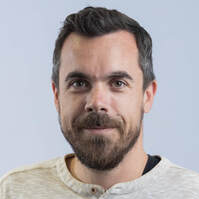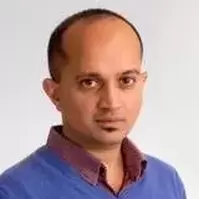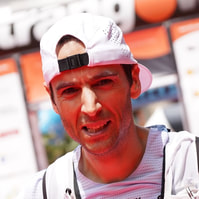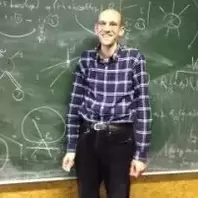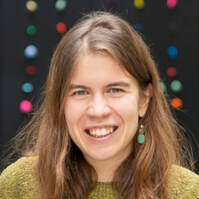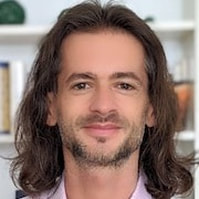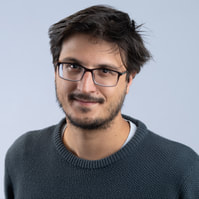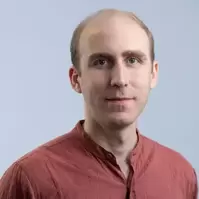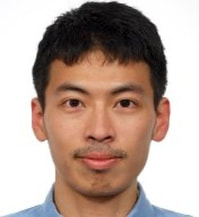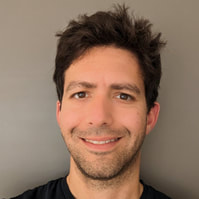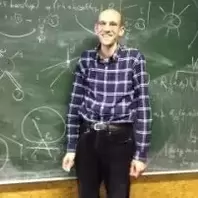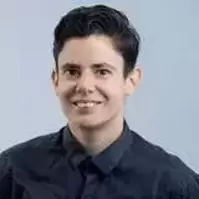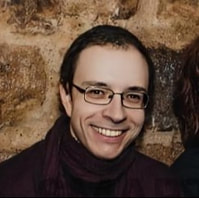Available Supervisors/Projects for Autumn 2024
Please see below a list of potential supervisors and projects for PhDs in Theoretical Physics in the London area. Projects shown in random order.
Note that this is a partial list and more information can be found in the application pages of the different universities and you can also approach other staff members not listed here for potential supervision. You should apply to all universities that you are interested in and not only to your top choice. Please visit our how-to-apply page for links to the different application portals.
Please see below a list of potential supervisors and projects for PhDs in Theoretical Physics in the London area. Projects shown in random order.
Note that this is a partial list and more information can be found in the application pages of the different universities and you can also approach other staff members not listed here for potential supervision. You should apply to all universities that you are interested in and not only to your top choice. Please visit our how-to-apply page for links to the different application portals.
Project titles
Andreas Stergiou (KCL): Conformal Field Theory and Quantum Computing
Sameer Murthy (KCL): Black holes and the quantum structure of spacetime
Pau Figueras (QMUL): Gravitational waves in higher derivative theories of gravity
Alessandro Torrielli (Surrey U.): AdS_2 integrability and deformations
Ana-Maria Raclariu (KCL): Holographic aspects of black holes in asymptotically flat spacetimes
Georgios Papathanasiou (City U.): From Beautiful Mathematics to Particle Scattering
Dionysios Anninos (KCL) : Group theory & the de Sitter universe
Martin Wolf (Surrey U.): Higher Geometry and Fluid Dynamics
Damian Galante (KCL): Quantum features of expanding spacetimes
Po-Shen Hsin (KCL): Anomalies and phases of matter
Martin Wolf (Surrey U.): Homotopical algebra and Quantum Field Theory
Tarek Anous (QMUL): De Sitter matrix models and field theory
Alessandro Torrielli (Surrey U.): Lukyanov approach to form factors
Eleni Kontou (KCL): Quantum energy inequalities for interacting fields
Fedor Levkovich-Maslyuk (City U.): Integrability and exact correlates: from spin chains to field theory
Other Phd projects at QMUL physics can be found here.
Andreas Stergiou (KCL): Conformal Field Theory and Quantum Computing
Sameer Murthy (KCL): Black holes and the quantum structure of spacetime
Pau Figueras (QMUL): Gravitational waves in higher derivative theories of gravity
Alessandro Torrielli (Surrey U.): AdS_2 integrability and deformations
Ana-Maria Raclariu (KCL): Holographic aspects of black holes in asymptotically flat spacetimes
Georgios Papathanasiou (City U.): From Beautiful Mathematics to Particle Scattering
Dionysios Anninos (KCL) : Group theory & the de Sitter universe
Martin Wolf (Surrey U.): Higher Geometry and Fluid Dynamics
Damian Galante (KCL): Quantum features of expanding spacetimes
Po-Shen Hsin (KCL): Anomalies and phases of matter
Martin Wolf (Surrey U.): Homotopical algebra and Quantum Field Theory
Tarek Anous (QMUL): De Sitter matrix models and field theory
Alessandro Torrielli (Surrey U.): Lukyanov approach to form factors
Eleni Kontou (KCL): Quantum energy inequalities for interacting fields
Fedor Levkovich-Maslyuk (City U.): Integrability and exact correlates: from spin chains to field theory
Other Phd projects at QMUL physics can be found here.
Project descriptions
|
Conformal Field Theory & Quantum Computing
Supervisor: Andreas Stergiou (KCL) Second order phase transitions display scale invariance and are typically described by conformal field theories (CFTs). The enhanced symmetry of these theories enables the study of their structure and properties with a plethora of analytic and numerical methods. Modern methods like the conformal bootstrap and the fuzzy sphere regularisation have produced impressive, non-perturbative results that have revolutionised our understanding of CFTs. These numerical methods have been efficiently implemented on classical computers. This PhD project aims to extend these implementations to quantum computers and explore more general applications of quantum computing to the study of CFTs. Contact: [email protected]
|
|
Black holes and the quantum structure of spacetime
Supervisor: Sameer Murthy (KCL) Black holes are known to have thermodynamic properties like temperature and entropy. This is an important clue towards a quantum theory of gravity, and explaining these thermodynamic features from a more fundamental quantum-statistical point of view is an active topic of research. The project aims to explore questions about quantum aspects of black holes, within the framework of string theory and AdS/CFT, of the following sort: (1) What is the nature of the microscopic states underlying a black hole? (2) How does one describe the collective behavior (phases) of these microstates? (3) How does one describe the microscopic structure of spacetime from a gravitational path integral? A good knowledge of quantum field theory (including path integrals) and GR are prerequisites. Some knowledge of string theory is useful, this will be developed as one goes along. Contact: [email protected]
|
|
Gravitational waves in higher derivative theories of gravity
Supervisor: Pau Figueras (QMUL) The aim of this project is to develop a mathematical and practical understanding of how to formulate the initial value problem in higher derivative theories of gravity from the point of view of effective field theory (EFT). The theories that we are going to consider are standard general relativity supplemented by higher curvature terms, such as Riemann3. These terms naturally arise as corrections from a microscopic theory of quantum gravity, but the resulting equations of motion are of order higher than two and hence it is not clear how to formulate the initial value problem. The analogous issues arises in relativistic theories of viscous hydrodynamics. In this context, the Israel-Stewart formulation of the theory in principle allows to modify the equations of motion in a way that they are well-posed while still (supposedly) capturing the long distance physics of interest and ensuring that the local entropy increases. Can a similar formulation be devised for higher derivative theories of gravity? Contact: [email protected]
|
|
AdS_2 integrability and deformations
Supervisor: Alessandro Torrielli (Surrey U.) This project concerns studying the scattering matrix underlying the AdS_2 integrable string theory, and attacking the problem of constructing the massive dressing factor. We will also study the recently-discovered scattering matrix interpolating the AdS_2 and AdS_3 integrable systems and deduce the quantum group properties of the underlying algebra. Contact: [email protected]
|
|
Holographic aspects of black holes in asymptotically flat spacetimes
Supervisor: Ana-Maria Raclariu (KCL) Gravitational scattering observables in (3+1)-dimensional asymptotically flat spacetimes can be reformulated in terms of correlation functions in a 2D "celestial" conformal field theory (cCFT). These 2D correlators obey an infinity of symmetries reflected in the bulk through soft theorems. A "holographic" dictionary relates bulk asymptotic expansions to symmetry generators in the cCFT. The goal of this project is to systematically incorporate black holes into this dictionary. An essential step will be to understand how bulk subregions in gravity are represented in the cCFT. This should lead to a precise formulation of black holes as special states in the cCFT and set the stage for holographic computations in such non-trivial backgrounds. Examples that could then be analyzed include scattering near the black hole horizon and the associated symmetries, matching to asymptotic infinity, imprints of black hole "hair" on gravitational waves and celestial correlators, and the flat space limit of AdS/CFT. Contact: [email protected]
|
|
From Beautiful Mathematics to Particle Scattering
Supervisor: Georgios Papathanasiou (City U.) Scattering amplitudes are at the core of the predictions that theoretical particle physics and quantum field theory provides for collider experiments. While Feynman diagrams in principle yield a framework for their computation, in practice this runs out of steam very fast. The goal of this project is to drastically improve the determination of scattering amplitudes by exploiting their mathematical structure, and its connection to cluster algebras, tropical geometry and integrability. Contact: [email protected]
|
|
Group theory & the de Sitter universe
Supervisor: Dionysios Anninos (KCL) The project aims to develop the interplay between group theoretic aspects of the de Sitter isometries and quantum fields on a fixed de Sitter background. A particular emphasis will be placed on gauge fields, both of integer and half-integer spin. The structure of entanglement of these fields will be considered. Contact: [email protected]
|
|
Higher Geometry and Fluid Dynamics
Supervisor: Martin Wolf (Surrey U.) Over the past few years, it has been realised that fluid dynamics, such as Navier-Stokes flows, can be analysed geometrically through Monge-Ampere geometry. In particular, Navier-Stokes flows in three dimensions are governed by higher (categorified) symplectic geometry. This project aims at using the tools of higher geometry to understand the underpinnings of Navier-Stokes flows with the aim of shedding light on the geometry of vortices. Contact: [email protected]
|
|
Quantum features of expanding spacetimes
Supervisor: Damian Galante (KCL) The Universe is currently experiencing a period of accelerated expansion. The same happened during the first instances of time. As a result, observers, like ourselves, do not have causal access to the whole spacetime but are instead surrounded by a cosmological event horizon. In the last 25 years, a new framework to understand quantum features of spacetime — known as holography — has been successfully applied to the study of black hole horizons. The aim of this project is to characterise quantum features of the cosmological horizon by understanding how to translate the holographic toolkit to incorporate spacetimes that undergo accelerated expansion. The use of concepts and techniques from quantum many-body systems and quantum information might play a crucial role in solving this problem. |
|
Anomalies and phases of matter
Supervisor: Po-Shen Hsin (KCL) Physics in two spatial dimensions has various applications in condensed matter and high energy physics such as fractional quantum Hall systems, topological orders and deconfined quantum criticality. These systems are often strongly coupled and challenging to study via perturbation methods. An important tool to study such systems is symmetry. The project will investigate the dynamics of quantum systems in two spatial dimensions by exploring various anomalies of symmetries, and generalizations to higher spacetime dimensions. Contact: [email protected]
|
|
Homotopical Algebra and Quantum Field Theory
Supervisor: Martin Wolf (Surrey U.) Homotopy algebras have recently been identified to underpin any quantum field theory. In particular, they provide a powerful mathematical framework to analyse the mathematical structures of quantum field theory.
Contact: [email protected]
|
|
De Sitter matrix models and field theory
Supervisor: Tarek Anous (QMUL) The aim of this project will be to construct quantum mechanical systems (such as matrix models) and quantum field theories whose isometry group written as field operators coincides with the Killing symmetries of d-dimensional de Sitter space SO(1,d)---in analogy with how the isometry group of conformal field theory coincides with the Kiling symmetries of Anti-de Sitter space. A particularly interesting case example may be that of two-dimensional conformal field theory with c=0. In this special case, it is known that the left/right-moving Virasoro algebra admits unitary representations that coincide with the states of a heavy particle in two-dimensional de Sitter space. Is it possible to design a Lagrangian that has these properties? What lessons can we extract for cosmology? Contact: [email protected]
|
|
Lukyanov approach to form factors
Supervisor: Alessandro Torrielli (Surrey U.) This project concerns applying the Lukyanov approach to form-factor calculation to the relativistic scattering theory obtained in the BMN limit of the massless left-left and right-right moving scattering matrix of the AdS_3 and AdS_2 integrable string theory. We will then compare with the formulas that are available in the literature, and in particular with the results of the recently developed AdS_3 hexagon program Contact: [email protected]
|
|
Quantum energy inequalities for interacting fields
Supervisor: Eleni Kontou (KCL) In General Relativity, any spacetime geometry, including wormholes, solves the field equations for a particular distribution of energy. Thus, physicists introduced energy conditions: restrictions on contractions of the stress-energy tensor such as the energy density (review: https://arxiv.org/abs/2003.01815) It was proven that these conditions are all violated in the context of quantum field theory(QFT). However, quantum fields cannot admit unlimited negative energy. Quantum energy inequalities(QEIs) introduce restrictions on the negative values of the renormalized energy density. QEIs have been derived for free fields but few results exist for interacting QFTs. The goal of this project is to derive new QEIs for interacting QFTs. A starting point is the phi^4 perturbative interaction which is also important in the analysis of non-minimally coupled fields (https://arxiv.org/abs/2309.10848). The project will shed new light on whether there is a fundamental energy condition in QFT. Contact: [email protected]
|
|
Integrability and exact correlators: from spin chains to field theory
Supervisor: Fedor Levkovich-Maslyuk (City U.) Quantum integrable models offer a fascinating way to explore non-perturbative physics as their hidden symmetries often lead to powerful exact results. The goal of this project is to develop new ways to compute key observables, in particular correlation functions, in integrable theories ranging from spin chains to 4d supersymmetric Yang-Mills theory and string theory. This project will also explore the associated deep mathematical structures (e.g. Yangian algebras, spectral curves, quantum separated variables), as well as important applications such as calculation of Feynman graphs. Contact: [email protected]
|
